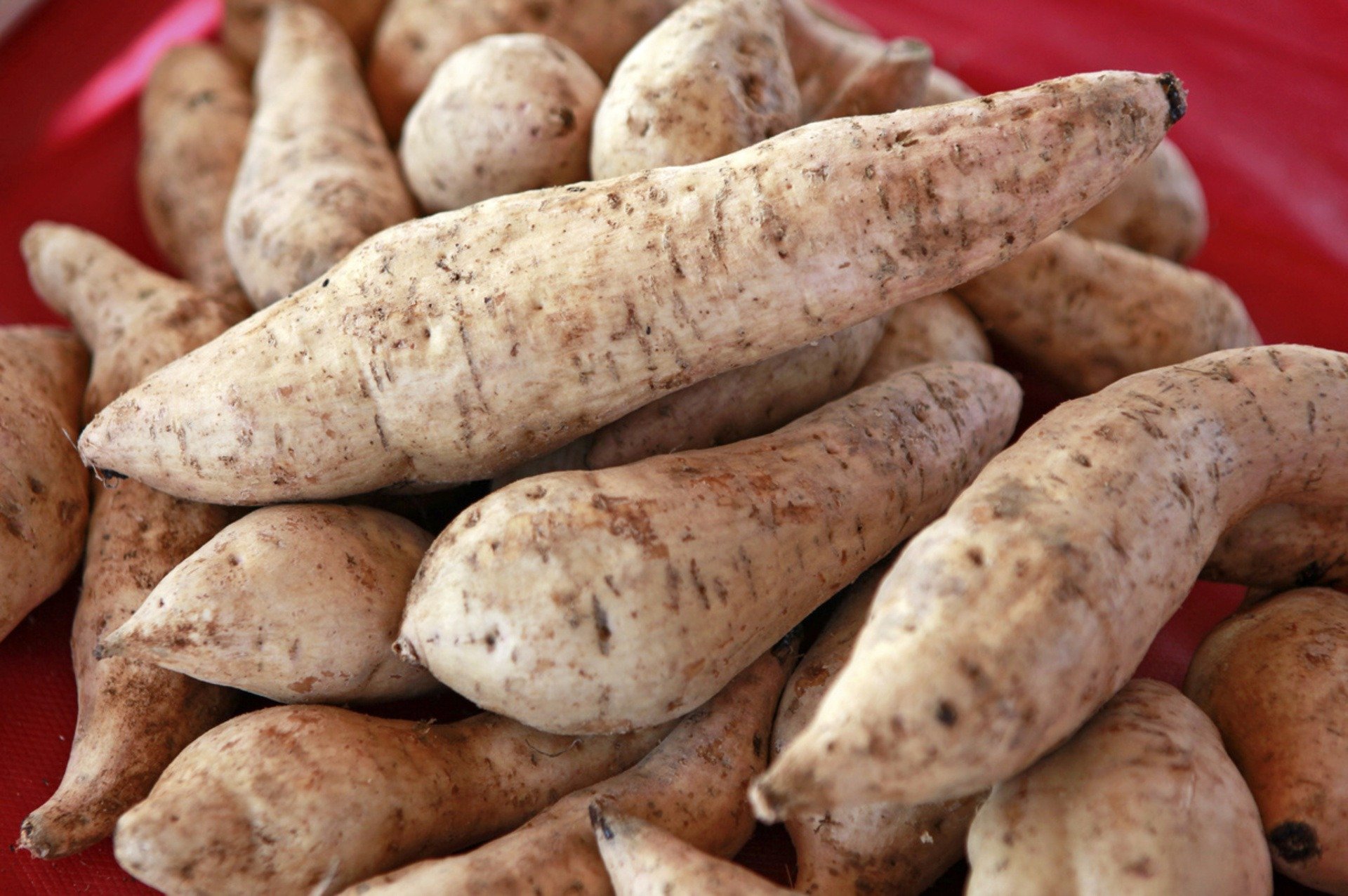Yam Photo Picture Yams yam
Yam Photo Picture Yams: A Comprehensive Guide to This Nutritious Staple
Introduction
Yams, scientifically known as Dioscorea, are a group of tuberous plants native to Africa, Asia, and the Americas. They are a staple food in many parts of the world and have been cultivated for centuries due to their high nutritional value and versatility. This comprehensive guide delves into the world of yams, exploring their varieties, culinary uses, nutritional benefits, and cultivation methods.Types of Yams
There are numerous yam varieties, each with distinct characteristics. Some of the most commonly cultivated and consumed types include:- African Yam: Originating from West Africa, this yam is widely grown in tropical regions. It has a rough, brown skin and creamy white flesh.
- Chinese Yam: Also known as "Chinese potato," this yam is native to Asia. It has a smooth, reddish-brown skin and white flesh.
- Dioscorea Polystachya: This yam is native to the Americas and is characterized by its long, cylindrical shape and white flesh.
- Ube Yam: Also known as purple yam, this variety is native to Southeast Asia. It has a vibrant purple skin and flesh, often used in desserts.
Culinary Uses of Yams
Yams are highly versatile and can be incorporated into various culinary creations. Here are some common ways to enjoy yams:- Baked Yams: A simple yet delicious way to savor yams is to bake them. Simply scrub, pierce the skin, and bake until tender.
- Fried Yams: Cut yams into wedges or fries and fry them until golden brown. Serve with your favorite dipping sauce.
- Mashed Yams: Boil or steam yams until tender, then mash them with butter, milk, and seasonings.
- Yam Soup: Create a hearty and comforting soup by simmering yams with broth, vegetables, and seasonings.
- Yam Curry: Add yams to your favorite curry recipe for a nutritious and flavorful twist.
Nutritional Benefits of Yams
Yams are nutritional powerhouses, offering a wealth of health benefits:- Rich in Fiber: Yams are an excellent source of dietary fiber, which aids digestion, promotes satiety, and helps maintain a healthy weight.
- High in Potassium: Yams are rich in potassium, an essential mineral that helps regulate blood pressure and supports heart health.
- Contains Antioxidants: Yams contain antioxidants that help protect cells from damage and may reduce the risk of chronic diseases.
- Provides Vitamin C: Yams are a good source of vitamin C, which supports immune function and helps in collagen production.
- Good Source of Vitamin B6: Yams provide vitamin B6, which is important for brain function, red blood cell production, and metabolism.
Cultivation of Yams
Yams can be cultivated in tropical and subtropical regions around the world. Here are some key steps involved in yam cultivation:- Select Suitable Soil: Choose well-drained, fertile soil with a pH between 5.5 and 6.5.
- Prepare the Soil: Remove weeds, plow the soil, and create ridges or mounds for planting.
- Planting Yams: Use whole yams or yam pieces as planting material. Place them in holes or furrows at a depth of 5-10 cm.
- Provide Support: Yams need support to grow vertically. Install stakes or trellises for the vines to climb on.
- Water and Fertilize: Water yams regularly and apply a balanced fertilizer during the growing season.
- Monitor Pests and Diseases: Be vigilant for pests and diseases that may affect yam plants. Take appropriate measures to control them.
- Harvesting Yams: Harvest yams when they reach maturity, typically 6-9 months after planting. Dig up the soil carefully to avoid damage to the tubers.
Conclusion
With their diverse varieties, culinary versatility, nutritional benefits, and ease of cultivation, yams stand as a symbol of nature's bounty. From humble beginnings in Africa, Asia, and the Americas, they have become a staple food across the globe. Their unique flavor and nutritional richness make them a valuable addition to a healthy diet. As we continue to explore the world of yams, new recipes and innovative uses are sure to emerge, further cementing their place in global cuisine and culture.If you are searching about Yam | Description, Uses, Species, & Facts | Britannica you've came to the right place. We have 10 Pictures about Yam | Description, Uses, Species, & Facts | Britannica like Sweet Potato or Yam: Which One Do You Eat? | Kitchen Shaman, Real Food Encyclopedia - Yam - FoodPrint and also Sweet Potato or Yam: Which One Do You Eat? | Kitchen Shaman. Read more:
Yam | Description, Uses, Species, & Facts | Britannica
 www.britannica.com
www.britannica.com yam yams yamswurzel wirkung britannica ratgeber ernaehrung
Fresh Yam (Medium) - WAKIKI
 www.wakiki.co.uk
www.wakiki.co.uk yam suran benefits fresh health food yams medium incredible nutrition stringer eating wakiki amazing fruit african groceries flavour common flavours
Real Food Encyclopedia - Yam - FoodPrint
 foodprint.org
foodprint.org yams food real foodprint
Why 'YAM' Is So Expensive In The Market – Newswire Law And Events
yam yellow walmart expensive market why so yams ca
He Married Me For My Cooking: Yams
 catyatescooking.blogspot.com
catyatescooking.blogspot.com yams yam
Sweet Potato Or Yam: Which One Do You Eat? | Kitchen Shaman
yam potato yams sweet eat which potatoes oriental plant shaman kitchen
Holistic Health: 59. Yam - Protection Against Cardiovascular Disease
 sattvamji.blogspot.com
sattvamji.blogspot.com yams yam ghana african fresh tubers food flour urhobo meaning plantain protection against traditional delicacies nairaland nigeria steps simple make
The Most Surprising Health Benefits Of Yam - Health Cautions
yam yams jewel sweet specialtyproduce produce benefits health surprising most potatoes recipes vegetable
The Nutritional Benefits Of Yams | Healthfully
yams african ghana benefits nutritional visa business food livestrong getty
Yam | Description, Uses, Species, & Facts | Britannica
 www.britannica.com
www.britannica.com yam yams winged dioscorea alata britannica species
Yam yams yamswurzel wirkung britannica ratgeber ernaehrung. The most surprising health benefits of yam. Yam suran benefits fresh health food yams medium incredible nutrition stringer eating wakiki amazing fruit african groceries flavour common flavours
